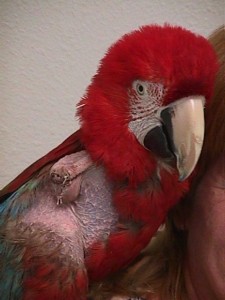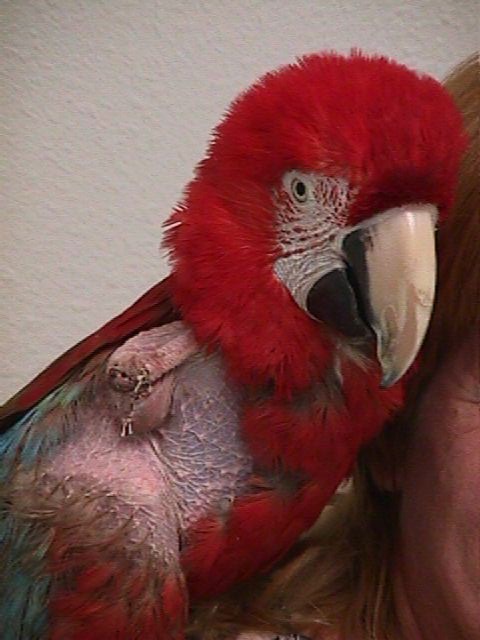 Pain is poorly understood in avian species. The prevention and alleviation of pain are important for a number of reasons, including humane considerations and the prevention of undesirable metabolic and behavioral side effects because of pain.
Pain is poorly understood in avian species. The prevention and alleviation of pain are important for a number of reasons, including humane considerations and the prevention of undesirable metabolic and behavioral side effects because of pain.
Criteria that may be used to determine whether a patient is in pain are as follows:
- Would the inciting surgical lesion be painful in humans?
- Is the lesion damaging to disuse and to what degree?
- Does the bird show aversive response to the lesion?
Symptoms and signs may indicate pain including:
- Change in temperament (aggressive or passive)
- Appearance of being uncomfortable (unable to rest)
- Decrease in normal activity, especially grooming (often exhibited as fluffing, reluctance to perch)
- Anorexia, lameness, or dropped wing
- Guarding the back or splinting of the abdomen
- Biting or chewing at the painful site, sutures or bandage
Rolling or thrashing may be a sign of severe pain but must be differentiated from seizures.
Procedures that the author considers painful include:
- Burns
- Crushing trauma (especially those injuries involving long bones and large muscles masses)
- Beak trauma
- Abrasions or bruising of distal extremities, especially the scaled skin of the feet
Not obviously painful are lacerations of the feathered skin and some simple fractures. Pain may be alleviated in some cases by supportive environment or protective or supportive bandaging of the affective part.
Analgesics have been poorly studied in avian patients, especially psittacines. The author has had good results using flunixin(1) and butorphanol tartrate(2). Promise has been showed with initial work using buprenorphine hydrochloride(3).
All of these drugs are injectable and the patient should be hospitalized while they are being administered.
1. Banamine; Schering Corp., Kenilworth, NJ
2. Torbugesic; Fort Dodge Laboratories, Fort Dodge, IA
3. Buprenex; Rickitt & Colman, Hull England

Do you give free animals to good homes?
Tony
On a very rare occasion we will have an animal donated to the hospital or adopt a homeless animal or one that needs medical attention. Some of those animals we will place through adoption services such as PEAC (for parrots), the San Diego Hematological Society (for reptiles) etc.
Injections cannot be used for the owner managing pain at home, especially for long term pain management. I see this is dated last year, but I am curious how you manage the arthritic avian patient, or post surgical pain management once it goes home and is no longer on injectible pain medication.
Most of our patients with significant pain go home with injectable pain medication (and 99% of the antibiotics we send home are injectable). We have no problem teaching owners how to give injections at home.
Some birds do well with oral pain medication (many birds with arthritis do well with meloxicam orally).
Have you ever performed oral surgery on an amazon parrot to remove an abscess? My current doctor is suggesting that for my parrot (mex-red head) who she says my 32yr old parrot has an oral abscess. Antibiotics and nebulizing treatments haven’t helped. One website commented they are sometimes lanced. The doctor did a culture and it showed several bacteria.
My bird bites on objects and doesn’t let go. He can sit there for hours if I don’t disturb him. This is a new development and I think it’s a sign of pain from his bumble foot (which is being treated). Could this be true?
You could be right. It may be caused by stress (vs pain) of being treated or limited in his mobility. As long as he is eating and maintaining his weight I would not worry about him doing it and see what happens when he is well. In the meanwhile, you could try on a higher pain medication dose or a different pain medication. Be sure to work that out with your veterinarian.
Thank you for your reply. His bumble foot has disabled him a bit, maybe he was afraid of falling off. He sleeps at the bottom of his cage instead of his perch when I put him to bed. It worries me but like I said, his feet can’t grip as well as they used to. Other than that, he eats, drinks and his droppings look OK.